Complete Guide to Heated Tobacco
Feb 10, 2025

Introduction
Heated tobacco products have become increasingly popular over recent years as a smoking alternative for those looking to move away from traditional smoking. Unlike conventional cigarettes, heated tobacco aims to deliver nicotine and tobacco without combustion which is stated to reduce the levels of harmful chemicals released.
Brands such as IQOS, developed by Philip Morris International (PMI), have led the way in offering a different way to consume tobacco with a wide range of products currently available on the market. Although PMI suggests their heated tobacco products expose users to fewer harmful substances than smoking [1], the health risks of these products are still being researched by organisations such as the World Health Organization (WHO) [2] and Centers for Disease Control and Prevention (CDC) [3] to assess their long-term effects.
In this guide, we break down everything you need to know about heated tobacco, including how it works, how it compares to traditional smoking and vaping, and its potential health implications. We also offer guidance on transitioning from smoking to these products, whilst comparing them to vape devices and e-liquids along the way.
Summary: Heated tobacco offers a smoke-free alternative by heating real tobacco instead of burning it, which may reduce harmful chemicals. Devices like IQOS provide a more cigarette-like experience, although vaping remains a cheaper and healthier option according to most recent data. Heated tobacco may be a useful stepping stone for those struggling to quit cigarettes.

What is heated tobacco?
Heated tobacco, often called heat-not-burn tobacco for IQOS products, refers to a category of tobacco products that are designed to be heated instead of burnt like traditional cigarettes. This warming process produces a nicotine-containing vapour similar to vaping instead of smoke which aims to reduce the amount of harmful chemicals released when compared to conventional burning when smoking [2,3].
Unlike vaping which uses e-liquids containing nicotine, heated tobacco devices use real tobacco in specially designed sticks such as HEETS or TEREA, which are inserted into an electronic device like IQOS. The device then heats the tobacco to a set temperature allowing users to inhale the vapour while avoiding combustion [4].
Because heated tobacco retains the use of real tobacco leaves, it provides a closer flavour and taste to traditional cigarettes, which may make it an ideal alternative for those struggling to transition to vaping from smoking. Although some studies highlight that heat-not-burn products produce fewer toxins than cigarettes, they are not risk-free and still contain nicotine which is addictive [5,6].
How does heated tobacco work?
Heated tobacco devices warm specially formulated tobacco sticks to a controlled temperature to release nicotine-containing vapour without combustion. The process of heating instead of burning is what separates these products from traditional cigarettes, which burn tobacco at temperatures exceeding 800°C which is known to produce thousands of harmful chemicals, including tar and carbon monoxide [3,7].
Devices such as IQOS use a ceramic or metal blade to heat the tobacco inside HEETS or TEREA sticks. This controlled heating extracts the nicotine and flavour from the tobacco without producing smoke or ash [4]. Instead, the device creates an aerosol (vapour) which contains nicotine, flavourings, and other tobacco elements.
Heated tobacco technology aims to replicate the sensation of smoking whilst aiming to reduce exposure to some harmful chemicals. However, regulatory bodies such as WHO [8] and the European Respiratory Society (ERS) caution that although the levels of certain toxins are lower than in cigarette smoke, health risks still exist [9], with further research required to assess the long-term effects of heated tobacco.
What is the point of heated tobacco?
The primary goal of heated tobacco is to provide adult smokers with a potentially less harmful alternative to traditional cigarettes while closely replicating the flavour and overall experience of smoking traditional cigarettes.
Unlike vaping, which uses e-liquids to produce vapour, heated tobacco products contain real tobacco that is heated rather than burnt. This process allows for nicotine delivery and tobacco satisfaction that closely resembles conventional smoking, making it an appealing option for those looking to transition away from cigarettes and who may have struggled to transition to a vape kit in the past.
Possible harm reduction
While not directly risk-free, there are studies to suggest that heated tobacco products expose users to significantly fewer harmful chemicals than cigarettes. According to PMI, the IQOS systems reduce the levels of certain toxic chemicals found in cigarette smoke by an average of between 90-95% [1]. However, independent bodies, including WHO and CDC, state that the long-term effects are still being researched, highlighting there is no direct data to suggest that heated tobacco is a healthy option [3, 8].
Smokers struggling to quit nicotine
Many smokers find it difficult to quit cigarettes, with nicotine being the main addictive drug in tobacco [10, 11]. Although Nicotine Replacement Therapies (NRTs) exist, they often struggle to satisfy ritual and the hand-to-mouth action associated with smoking [12]. Much like vaping, heated tobacco is designed to bridge this gap by delivering nicotine efficiently whilst providing a familiar sensory experience with real tobacco, with reduced odour, ash, and smoke when compared to cigarettes.
A step towards quitting?
Some smokers find heated tobacco products as a stepping stone towards quitting entirely. A study carried out by the University College London (UCL) identified that although heated tobacco is still harmful, making the switch completely from cigarettes may reduce exposure to harmful substances which offers a potential harm reduction for those who might have otherwise continued smoking [13].

What's the difference between heated tobacco and traditional cigarettes?
The core difference between heated tobacco and traditional cigarettes is how the tobacco is processed. Unlike cigarettes that burn tobacco and produce smoke, tar, and thousands of harmful chemicals, devices such as IQOS warm tobacco at lower temperatures to create a vapour instead of smoke, similar to vape devices. This distinction leads to several key differences in chemical exposure, odour, and overall user experience.
Combustion vs. Heating
- Cigarettes burn at temperatures exceeding 800°C which releases carbon monoxide, tar, and other known harmful chemicals which are known to be carcinogenic [3].
- Heated tobacco devices like IQOS warm the tobacco to around 350°C, which is high enough to release nicotine and flavour but not enough to cause combustion [14].
Chemical exposure
Because heated tobacco does not directly burn, the levels of harmful chemicals are debated to be significantly lower than those in cigarette smoke. According to PMI, heated tobacco reduces levels of certain toxicants by 90-95% when compared to traditional cigarettes [1].
However, as discussed earlier, independent health organisations such as ASH Scotland and the WHO argue that although the exposure to harmful chemicals is lower, heated tobacco is not risk-free, and the long-term health effects remain uncertain[7, 8].
Tar and carbon monoxide
- Cigarettes are known to produce tar which builds up in the lungs and is a leading cause of respiratory diseases such as Chronic Obstructive Pulmonary Disease (COPD) and lung cancer [6].
- Although heated tobacco does not produce tar, some harmful chemicals are still present, meaning risks are reduced but not eliminated [9].
Odour and residue
- Cigarette smoke lingers on clothes, furniture, and indoor spaces, leaving a strong, persistent odour [15].
- Heated tobacco produces vapour, which disappears faster and leaves less noticeable residue [13].
Nicotine delivery and satisfaction
Both heated tobacco and cigarettes deliver nicotine, which is the addictive component of tobacco. Because heated tobacco does not burn, some users may find that the nicotine hit is slightly different from traditional smoking. IQOS and other heated tobacco products are designed to closely mimic cigarettes, making them a more familiar alternative than vaping [14].

Differences between heated tobacco and vaping
Heated tobacco and vaping are most commonly grouped as smoking alternatives, but they do have significant differences in how they work, their ingredients, and the overall experience they provide. Although both products avoid burning nicotine-based products, they use different technology and materials.
Key differences
- Heated tobacco devices like IQOS use an electronic heating system to warm real tobacco sticks (such as HEETS or TEREA), releasing a nicotine-containing vapour without burning the tobacco [1].
- Vapes on the other hand work by heating e-liquid that contains nicotine, propylene glycol, vegetable glycerin, and flavourings. This liquid then turns into vapour that is inhaled [16].
Nicotine delivery and experience
- Heated tobacco products contain tobacco to match smoking in terms of taste and throat hit. With this difference, it's argued that many smokers may find this transition easier compared to vaping [14].
- Vaping delivers nicotine in a different way which most commonly offers a smoother throat hit depending on the nicotine strength and device used. Some vapers report a less intense nicotine hit compared to smoking or heated tobacco [13].
Chemical exposure and health risks
- Studies suggest that heated tobacco products emit less harmful chemicals than traditional cigarettes, however, it's important to highlight that they still contain some toxic compounds [3].
- Vaping is considered to have fewer toxic emissions than both cigarettes and heated tobacco, which can mostly be related to being tobacco-free. Public Health England (PHE) estimates that vaping is at least 95% less harmful than smoking [16].
- It is important to highlight that some research indicates that certain heated tobacco devices can cause similar damage to lung cells as cigarettes, which may raise concerns about the long-term effects [9].
Flavour availability
- Heated tobacco products are available in a wide range of flavours, mostly consisting of a tobacco base with fruity or menthol notes.
- Vaping on the other hand provides a much wider variety of flavours including fruity, sweet, and menthol combinations to offer a more customisable experience.
Cost and maintenance
- Heated tobacco devices require ongoing costs with tobacco sticks such as HEETS or TEREA which may compare to the expenses of cigarettes over time.
- Vaping has a much lower ongoing cost thanks to e-liquids and replacement coils being much more accessible whilst being a cheaper option overall.

Is heated tobacco safer than smoking?
There is growing debate about the safety of heated tobacco, especially when compared to smoking. Current research suggests that although these products expose users to fewer harmful chemicals than cigarettes, they are not risk-free.
PHE has stated that heated tobacco is likely to be less harmful than smoking but is more harmful than vaping overall [16]. The U.S. FDA has also acknowledged that IQOS reduces exposure to harmful substances, however they emphasise that long-term effects are still being studied. [17]
Is heated tobacco as bad as smoking?
Although heated tobacco is not deemed to be as harmful as smoking, these products still contain nicotine and other chemicals that have health risks. The WHO has raised concerns over the lack of independent long-term studies, and warm that reducing exposure to toxic chemicals does not necessarily mean a lower health risk overall [8].
Although some independent studies suggest that heated tobacco users have lower exposure to harmful compounds compared to smokers, this does not match the much lower levels seen in vaping, or quitting altogether [13].
Is heated tobacco carcinogenic?
Cigarette smoke is known to contain thousands of chemicals, many of which are carcinogenic [18]. Heated tobacco products still release some of these harmful chemicals, but they are delivered at reduced levels when compared to traditional smoking.
The ERS reports that heated tobacco products may still contribute to lung and cardiovascular disease, but at much lower levels than cigarettes [5]. Although reduced exposure to carcinogens suggests a lower risk of cancer, there is no conclusive evidence to prove heated tobacco is completely safe.
Is heated tobacco healthier than vaping?
Most recognised health organisations including PHE consider vaping to be one of the least harmful nicotine alternatives [16]. Unlike heated tobacco, vaping does not involve real tobacco as vape devices are paired with e-liquids instead that contain nicotine and flavouring. While both heated tobacco and vaping expose users to fewer toxins than cigarettes, studies indicate that vaping produces even lower levels of harmful substances than heated tobacco [19].
Can heated tobacco reduce the risk of lung disease?
Making the switch completely from smoking to heated tobacco may lower the risk of developing smoking-related lung diseases. A study by Scientific Reports found that heated tobacco exposure led to fewer inflammatory markers in lung cells when compared to cigarette smoke [20]. However, the ERS cautions that heated tobacco may still cause harm to lung cells, although at a reduced rate compared to smoking traditional cigarettes [9].
What studies say about heated tobacco health risks
The scientific research on heated tobacco is still ongoing with mixed conclusions. The U.S. FDA has acknowledged that these products reduce exposure to harmful chemicals, but don't explicitly state that they are safe [17]. In addition, independent studies suggest that although users of heated tobacco inhale fewer harmful substances, complete smoking cessation or switching to vaping likely poses an even lower risk [21].
Although highlighted research suggests that heated tobacco may be less harmful than smoking, there is still no evidence to suggest it is entirely risk-free. Smokers looking to reduce harm should consider their options carefully, with quitting tobacco altogether remaining the safest choice.

Exploring IQOS heated tobacco
IQOS is one of the leading brands of heated tobacco products. Developed by Philip Morris International (PMI), they state that 25 million adult smokers have tried IQOS worldwide, with around 73% switching completely from cigarettes [21]. The growth of their products is mostly due to a similar experience to smoking that they provide, but what else do their products provide?
In this segment, we delve into IQOS and provide further information and answers to frequently asked questions so you can gain a much greater understanding of IQOS heated tobacco which has gained significant traction around the world, including the UK where it is marketed as a safer alternative to traditional tobacco and smoking.
How IQOS heats tobacco
Unlike traditional tobacco, IQOS devices use a heating blade to warm up tobacco inside either HEETS or TEREA sticks. At a much lower temperature than cigarettes, the device releases nicotine and flavour whilst avoiding combustion. Built with an electronic control system, the device regulates temperature to ensure a consistent experience throughout.
Does IQOS burn tobacco?
No, IQOS does not burn tobacco. These devices heat tobacco sticks to the point before combustion which avoids smoke production that releases tar, and thousands of toxic chemicals. For this reason, IQOS devices create a vapour also known as an aerosol rather than smoke. This means that users can avoid ash, strong odour, and numerous harmful chemicals associated with traditional tobacco smoking.
The lack of smoke is a key selling point for IQOS and other heated tobacco products currently available on the market. The UK's Committee on Toxicity (COT) has acknowledged that although IQOS does release some harmful substances, the levels are classed as significantly lower than that found in cigarette smoke [22]. However, it is still important to highlight that it is unclear whether this reduction translates to a lower risk of smoking-related diseases.
Benefits of using IQOS devices
When compared to traditional cigarettes and other nicotine alternatives, IQOS offers several advantages:
- Reduced harmful chemicals – Studies suggest that IQOS products emit up to 95% fewer harmful compounds compared to cigarette smoke.
- No smoke or ash – IQOS does not burn tobacco which avoids lingering smoke, ash, and strong odours, making it more discreet.
- Closer to smoking – Unlike e-cigarettes, IQOS provides an authentic tobacco experience, which some smokers find more satisfying.
- Lower second-hand exposure – Research from PHE suggests that second-hand exposure from heated tobacco vapour is substantially lower than second-hand smoke from cigarettes.
- Regulated products – IQOS has been authorised by the U.S. FDA as a modified-risk tobacco product, meaning it may pose a lower risk than smoking.
Limitations of IQOS
Although IQOS devices welcome a wide range of benefits, it's important to highlight their limitations if looking at them as a smoking alternative:
- Not risk-free – Although exposure to harmful chemicals is lower than with smoking, heated tobacco still contains nicotine and some toxic compounds.
- Expensive – IQOS devices require an upfront purchase, and the added cost of heated tobacco sticks can add up over time.
- Regulations – Some countries have strict regulations on heated tobacco products, as their long-term health effects remain uncertain.
While IQOS provides a potentially reduced-risk alternative to smoking, it is still a nicotine product and should be used with caution. Smokers looking to switch should weigh the benefits and limitations carefully, especially in comparison to other nicotine alternatives like vaping or quitting altogether.

Choosing the right IQOS device
IQOS offers a range of devices with their latest models being the ILUMA and ILUMA ONE, each offering a different design that focuses on numerous factors including battery life, portability, and ease of use.
IQOS ILUMA
- Uses Smartcore Induction Technology which heats up tobacco without a blade, making it more efficient while reducing the need for cleaning.
- Ideal for smokers who want a hassle-free experience with minimal maintenance.
- Compatible with TEREA tobacco sticks.
IQOS ILUMA ONE
- A compact and budget-friendly alternative to the ILUMA device with a single-piece design.
- Also built with Smartcore Induction Technology for a cleaner and more convenient experience.
- Best suited for those who prioritise portability and ease of use.
- Compatible with TEARA tobacco sticks.
IQOS 3 DUO (Previous Generation)
- Features a blade heating technology which offers a traditional heated tobacco experience although requires frequent cleaning of the blades.
- Great option for those who prefer a familiar experience with the earlier IQOS models.
- Compatible with HEETS tobacco sticks with a wide range of flavours.

Understanding HEETS and TEREA tobacco sticks
HEETS and TEREA are specially designed tobacco sticks that are compatible with IQOS devices. Although both contain real tobacco, they differ in compatibility and technology so it's important to ensure you match up the correct sticks with your chosen device.
HEETS (for IQOS 3 DUO and earlier models)
- Traditional tobacco sticks designed for blade-based heating systems.
- Available in many flavours including Amber, Sienna, Yellow, and Menthol.
- Require regular cleaning of the device due to tobacco residue.
TEREA (for IQOS ILUMA devices)
- Completely sealed sticks that prevent tobacco from leaving residue inside the device.
- Utilise the Smartcore Induction System for even heating and enhanced flavour delivery.
- Offer a cleaner experience with no need for internal cleaning.
Comparing heated tobacco and vaping
Both heated tobacco and vaping have gained popularity over the years as alternatives to traditional smoking, with them both offering distinct experiences. Although both are smoke-free options, their methods of delivering nicotine, flavour, and user satisfaction differ significantly. If you're looking to move away from cigarettes then you may prefer one over the other when comparing habit, taste, and nicotine needs.
Nicotine delivery comparison
Nicotine delivery plays a vital role in how effective an alternative product is for smokers. Heated tobacco such as IQOS use real tobacco which means the nicotine delivery is similar to cigarettes. The nicotine within tobacco sticks is absorbed at a rate similar to smoking which allows users to satisfy their cravings more effectively.
Vaping on the other hand depends on the e-liquid use. Traditional freebase nicotine delivers a slower nicotine hit than cigarettes, however, nic salt e-liquids commonly found in disposable vapes, provide a faster and smoother hit that mimics the absorption rate of cigarettes. Research carried out by Nicotine and Tobacco Research found that nicotine salt e-liquids can be more efficient at delivering nicotine than traditional e-cigarettes [23].
Although heated tobacco provides a consistent nicotine hit, it's clear that vaping offers more control over nicotine levels which allows users to gradually reduce their intake if they wish to move away from nicotine completely.
Flavour and satisfaction levels
Flavour is another key factor that can influence user preference. Heated tobacco products use tobacco leaves which means they offer a more genuine tobacco taste. IQOS offer both HEETS and TEREA sticks with classic tobacco variations with options like menthol or mellow blends, but they will always contain a tobacco flavour throughout.
However, vaping provided an unmatched variety. E-liquids are available in thousands of flavours, from fruits and desserts to menthol and tobacco blends, the wide selection available appeals to users who enjoy experimenting with different tastes. According to a study published in the Harm Reduction Journal, flavour variety plays a significant role in helping smokers move away from cigarettes [24].
When looking at overall satisfaction, both smoking alternatives have their advantages and limitations, but the choice comes down to personal preference. Heated tobacco offers a familiar cigarette-like experience, with vaping welcoming customisations, stronger flavours, and different nicotine strengths.

Making the switch to heated tobacco
Transitioning away from traditional cigarettes to heated tobacco can be a positive step for smokers wanting to reduce their exposure to harmful chemicals while still being able to enjoy the familiar taste and experience of tobacco. Unlike vaping, heated tobacco offers a more cigarette-like ritual which may make it easier to switch to for many smokers.
However, vaping may still be the best choice for those looking for a greater reduction in harmful chemicals, with more customisable options, and a much wider variety of flavours. Because e-liquids eliminate tobacco, they reduce exposure to tar and other combustion-related toxins. For smokers looking for the most effective harm-reduction alternative, vaping is still currently backed as a better long-term choice.

Conclusion
Switching to heated tobacco is a personal decision which for many smokers offers a practical alternative whilst reducing exposure to some harmful chemicals. Unlike vaping, this smoking alternative welcomes a familiar experience with a real tobacco flavour and nicotine hit. By removing smoke, ash, and strong lingering odours, devices such as IQOS may offer a more socially acceptable choice in many settings.
Although heated tobacco produces fewer harmful chemicals than cigarettes, it is not risk-free, and long-term studies on its health impact are still ongoing. Organisations including the WHO and FDA acknowledge that while it may be a less harmful option than smoking, the best way to reduce risks is still quitting entirely. However, for those struggling to quit smoking, or find vaping unsatisfying, heated tobacco could be a more manageable stepping stone away from traditional smoking.
Ultimately, the best choice is the one that works for you. If completely giving up nicotine feels unrealistic, then transitioning to a product that reduces harm could be a step in the right direction. With the evidence highlighted, vaping may be the best initial choice although heated tobacco is still a viable option as a potentially healthier alternative.
Whether it's IQOS or another alternative, what matters most is making an informed decision based on your lifestyle, preferences, and long-term health goals.
Frequently Asked Questions (FAQ)
Switching to IQOS reduces lingering odour, provides a milder tobacco taste, and lowers exposure to harmful chemicals since it heats tobacco instead of burning it. It also eliminates ash and tar, offering a cleaner experience, though adjusting may take time.
IQOS heats real tobacco without combustion, delivering a taste and experience closer to cigarettes, while vapes use e-liquids with nicotine and flavourings to create an aerosol. Unlike vapes, IQOS does not offer the same variety of flavours but provides a more tobacco-like sensation.
Heated tobacco is designed to produce fewer harmful chemicals than cigarettes because it does not involve combustion. However, it is not risk-free as it still contains nicotine and other toxic substances.
HEETS are used with older IQOS models (e.g., IQOS 3 DUO) and require regular cleaning. TEREA sticks are sealed and exclusively designed for IQOS ILUMA, offering a cleaner experience with no need for cleaning.
HEETS contain real tobacco but are heated instead of burned, meaning they produce fewer harmful chemicals than cigarettes and do not create ash or smoke.
Heated tobacco has a similar taste, but the flavour is smoother and less harsh since there is no combustion. The lack of smoke also makes the aftertaste cleaner.
Heated tobacco still contains nicotine and some toxins, but research suggests it exposes users to fewer harmful substances than smoking.
Vaping uses e-liquid with nicotine, while heated tobacco uses real tobacco sticks. Heated tobacco provides a more cigarette-like experience, but vaping offers a wider range of flavours and nicotine strengths.
No, heated tobacco produces a vapour rather than smoke since the tobacco is heated, not burned. This means no ash, less smell, and potentially fewer harmful chemicals.
Studies suggest heated tobacco exposes users to fewer harmful chemicals than cigarettes, but it is not risk-free.
Heated tobacco may reduce exposure to harmful toxins that contribute to lung disease compared to smoking, but it still poses some risk according to the World Health Organisation (WHO).
Nicotine pouches contain nicotine without tobacco, so they eliminate tobacco-related toxins. Heated tobacco, however, maintains the ritual of smoking, which some users prefer.
Many users report less coughing, improved taste/smell, and no lingering smoke odour after switching to IQOS, but nicotine addiction remains, and long-term health effects are still being studied.
Yes, heated tobacco produces significantly lower levels of toxicants than cigarettes, reducing harmful chemicals like carbon monoxide and tar, though some toxic compounds remain, and long-term effects are still uncertain.
Disclaimer: The content on www.royalflushvape.co.uk offers general insights about vaping and vape related products. Please be aware that this information is not meant to be a substitute for medical advice and should only be relied upon when explicitly referenced. We make no guarantees regarding the accuracy, reliability, or health-related advantages of the content displayed across all pages of our website, including blog posts, product pages and social media content.
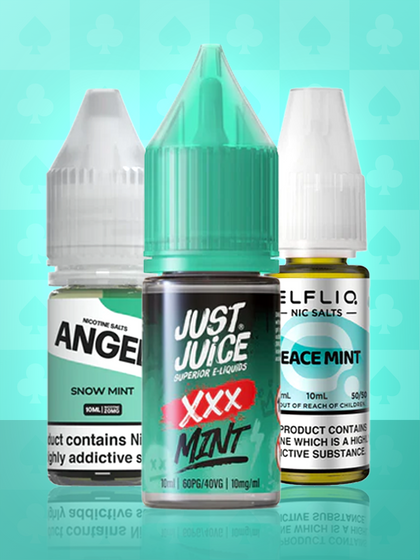
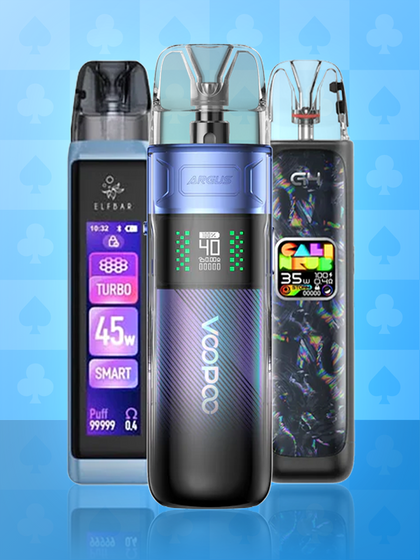
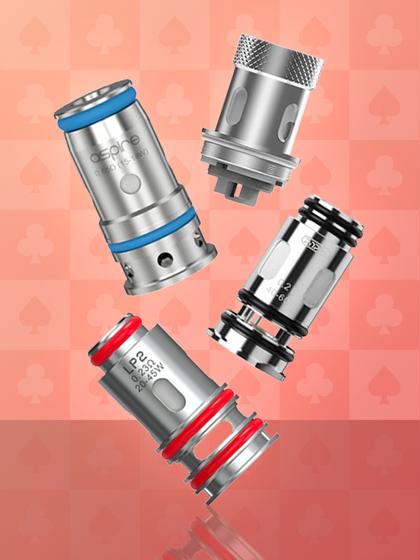
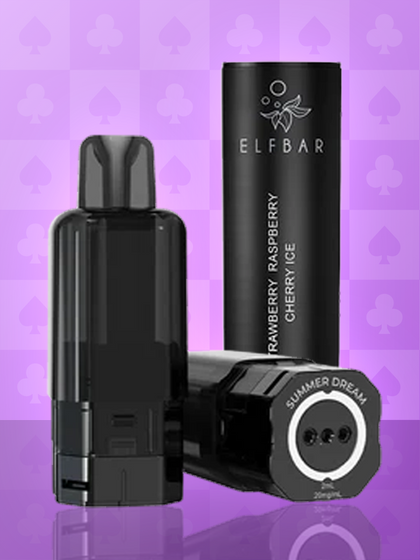
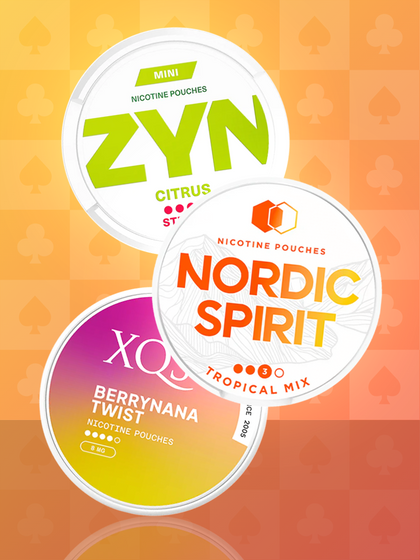
Leave a comment